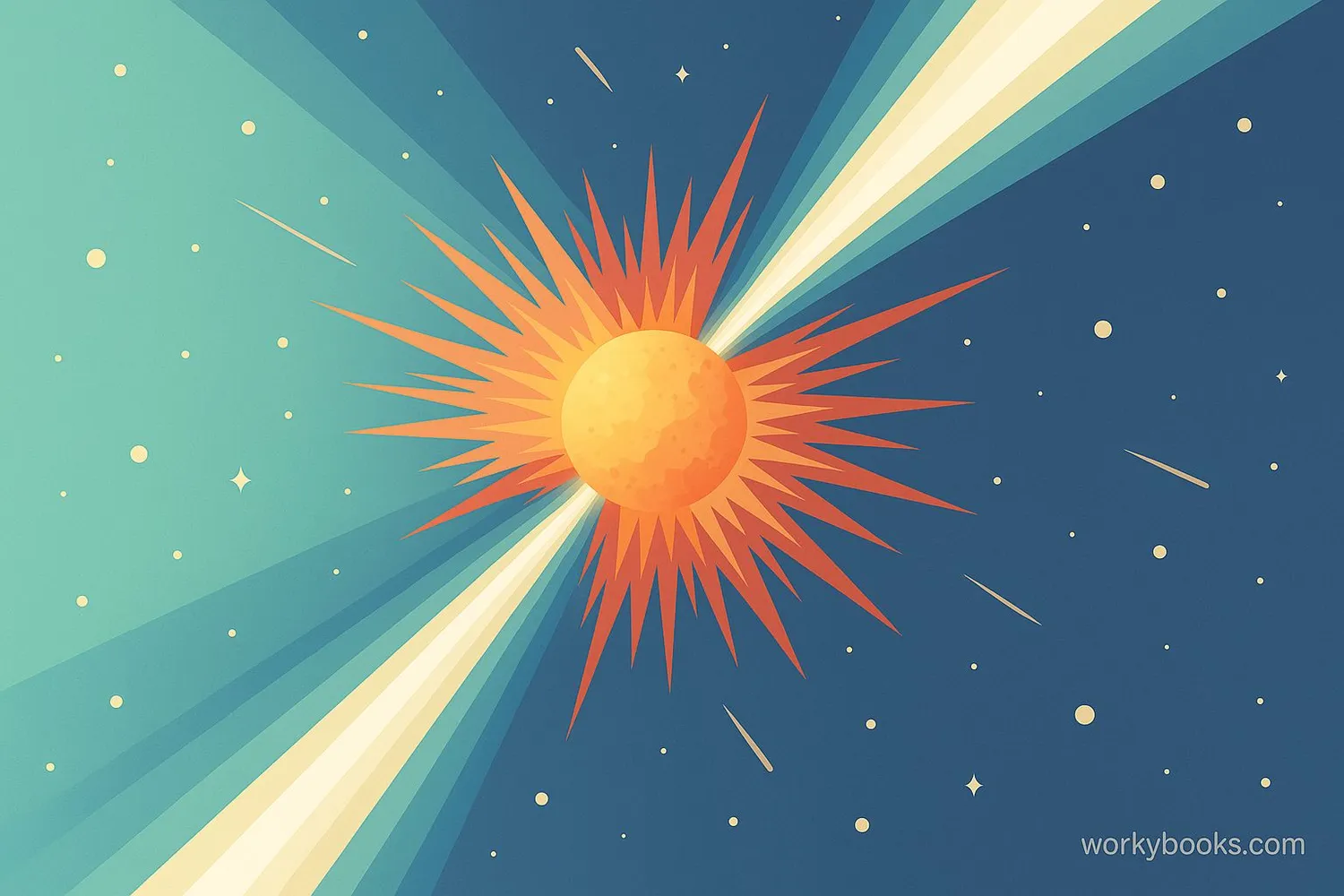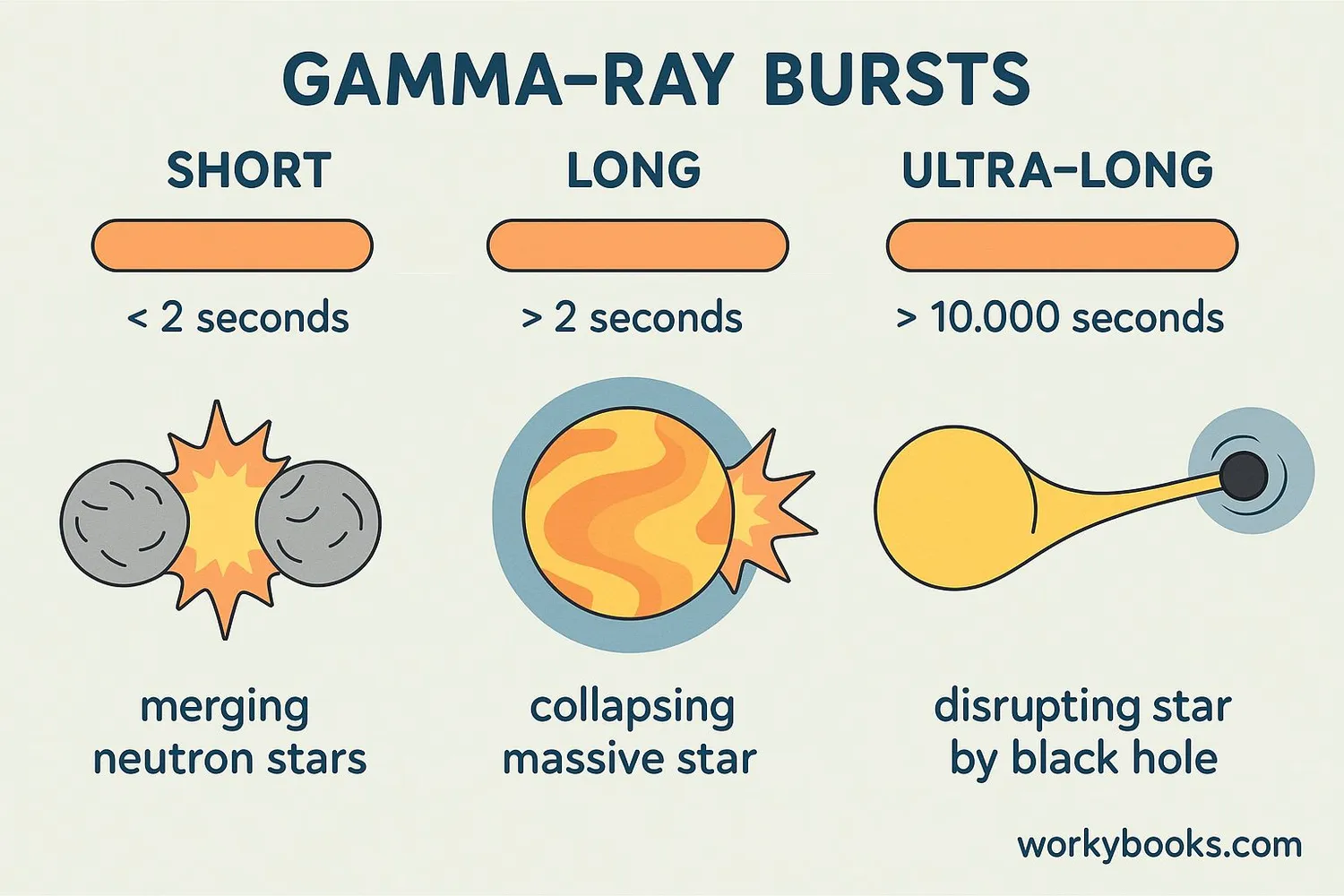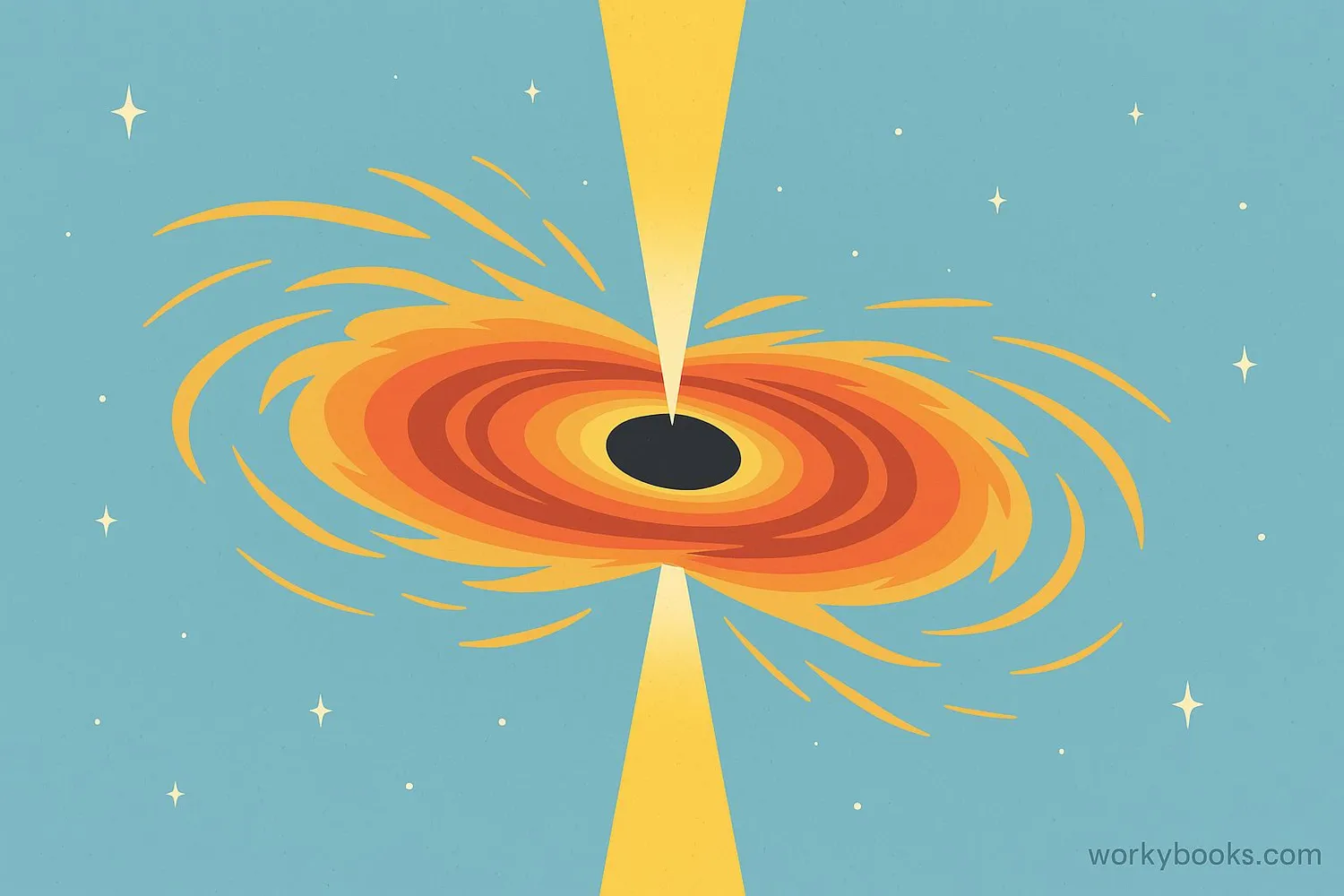Gamma-Ray Bursts - Definition, Examples, Quiz, FAQ, Trivia
Discover the most powerful explosions in the universe!
What are Gamma-Ray Bursts?

Gamma-Ray Bursts (GRBs) are the most powerful explosions in the universe! They are sudden, intense flashes of gamma rays - the most energetic form of light. These bursts can release more energy in seconds than our Sun will produce in its entire 10-billion-year lifetime!
GRBs were discovered accidentally in the 1960s by military satellites looking for nuclear explosions. Instead, they found cosmic explosions happening all across the universe. These bursts are so bright that we can see them from billions of light-years away!
Space Fact!
Gamma-ray bursts happen about once per day somewhere in the universe, but we detect only a fraction of them.
Types of Gamma-Ray Bursts

Scientists classify gamma-ray bursts into three main types based on how long they last:
Short GRBs
Last less than 2 seconds
Caused by collisions of neutron stars
Long GRBs
Last from 2 seconds to several minutes
Created when massive stars collapse into black holes
Ultra-Long GRBs
Last for hours or even days
May come from the largest stars in the universe
Each type has a different cause and creates different afterglows that astronomers can study with telescopes. The afterglow is the fading light that remains after the initial gamma-ray flash and helps scientists understand what caused the burst.
Detection Fact!
The longest gamma-ray burst ever recorded lasted for almost 7 hours!
How Gamma-Ray Bursts Happen

Gamma-ray bursts are created during some of the most violent events in the universe:
Massive Star Death
For long GRBs, a very large star runs out of fuel and collapses under its own gravity
Black Hole Formation
The collapsing star forms a black hole at its center
Jet Creation
Powerful jets of gamma rays shoot out from the poles at nearly the speed of light
For short GRBs, the process is different. They occur when two super-dense objects like neutron stars collide. This collision also creates a black hole and produces jets of gamma rays. These events are so powerful that they also create gravitational waves - ripples in spacetime that scientists can detect with special instruments.
Why Gamma-Ray Bursts Matter

Gamma-ray bursts are important for many reasons:
Cosmic Laboratories
They let us study extreme physics that we can't recreate on Earth
Time Machines
Since light takes time to travel, distant bursts show us the early universe
Cosmic Yardsticks
Scientists use them to measure distances in space
Gamma-ray bursts also help us understand:
• How black holes form and behave
• What happens when the most massive stars die
• How heavy elements like gold are created
• The structure of the early universe
While gamma-ray bursts are incredibly powerful, they happen so far away that they don't pose any danger to Earth. The closest known burst occurred about 2 billion light-years away - much too far to affect us!
Gamma-Ray Burst Quiz
Test your knowledge about gamma-ray bursts with this fun quiz! Answer all 5 questions to see how much you've learned.
Frequently Asked Questions
Here are answers to some common questions about gamma-ray bursts:
Space Trivia
Discover some amazing facts about gamma-ray bursts and space!
Energy Powerhouse
In just a few seconds, a gamma-ray burst releases more energy than the Sun will produce in its entire 10-billion-year lifetime!
Speed Champions
The jets from gamma-ray bursts travel at 99.99% the speed of light - that's 670 million miles per hour!
Ancient Light
The most distant gamma-ray burst ever detected happened when the universe was just 600 million years old - less than 5% of its current age!
Cosmic Gold Factory
Short gamma-ray bursts from neutron star collisions create heavy elements like gold and platinum. Your gold jewelry was likely forged in such a cosmic explosion!


